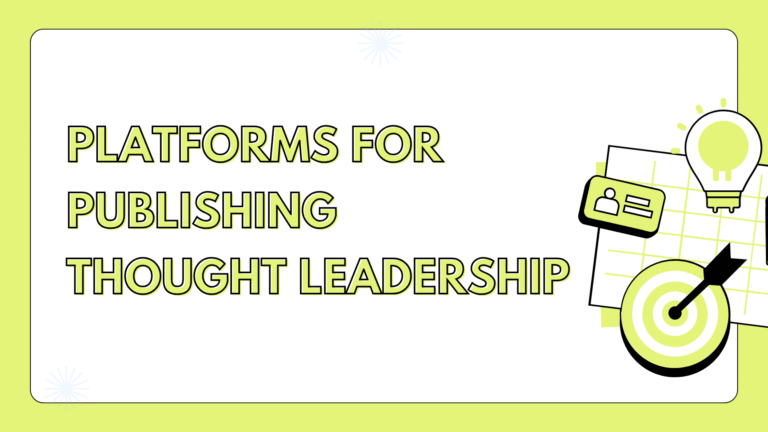Automation has made it possible to do things that used to take whole teams and hours of work with just a few clicks. It has gone from something that would be nice to have to something that is necessary. In fact, 63% of companies plan to increase their marketing automation budgets in 2025.
For years, I’ve been trying out different tools, workflows, and strategies to find out what really helps marketers get results and save time. It’s clear that not all automation platforms are the same. Some are great for e-commerce, some are great for B2B lead nurturing, and a few want to be the only tool you need. Knowing which tool is best for your goals and resources is the key.
Before we get into the best automation tools for marketers in 2025, let’s take a step back and talk about what marketing automation tools are and why they are so important this year.
What are Automation Tools?
Automation tools are basically software platforms that do marketing tasks over and over again for you. These tools handle sending emails, posting on social media, and moving leads through a pipeline in the background instead of you having to do it yourself.
But automation is more than just setting up appointments or sending reminders these days. Modern platforms use AI to tailor messages to each person, guess how they will act, and even suggest the best next step in a campaign. This means that marketers can spend less time guessing and more time coming up with strategies and ideas.
To sum up, automation tools help you work smarter, not harder. They make sure things are consistent, help you target better, and give you more time to focus on what really matters: building relationships, refining your strategy, and growing your business.
Best Marketing Automation Tools in 2025
There are so many tools on the market that it can be hard to choose the right one. The good news is that 2025 has brought even more powerful, easy-to-use platforms that work for businesses of all sizes.
The tools below are not only popular, but they have also worked in real campaigns. I’ve seen them help marketers get more sales, make their work easier, and grow their efforts without getting tired. No matter if you’re running a small business or a big business, there’s something here for you.
Let’s look more closely at the best automation tools that you should pay attention to this year.
| Tool | Best For | Key Features | Pricing (2025) |
| HubSpot Marketing Hub | Inbound marketing & growing businesses | All-in-one: email, CRM, workflows, content, reporting | Starts free; paid plans from $20/month (scales by contacts) |
| Brevo (Sendinblue) | Budget-friendly multichannel campaigns | Visual workflow builder; email, SMS, WhatsApp, chatbots | Free plan; paid from $25/month |
| Omnisend | E-commerce stores | Email + SMS automation, cart recovery, product suggestions | Free tier; paid from $16/month |
| Mailchimp | Varied business needs | Email, analytics, integrations, landing pages | Free plan; paid from $13/month |
| ActiveCampaign | Small to mid-sized businesses | Automation + CRM integration | No free plan; paid from $29/month |
| Salesforce Pardot | Enterprise B2B lead nurturing | Lead scoring, sales alignment, enterprise workflows | Starts $1,250/month |
| Klaviyo | E-commerce personalization | Behavior tracking, advanced segmentation, SMS + email | Free tier; paid from $20/month |
| Constant Contact | Simple campaigns for growing businesses | Email marketing, multichannel campaigns | Paid from $12/month |
| Zapier | Connecting apps & workflows | Cross-platform automation, 3,000+ integrations | Free tier; paid from $20/month |
| Niche Tools (Supademo, Clay, Buffer, etc.) | Specialized tasks (demos, data, social, AI workflows) | Solve specific marketing challenges | Mostly freemium; paid from $10-$30/month |
1. HubSpot Marketing Hub
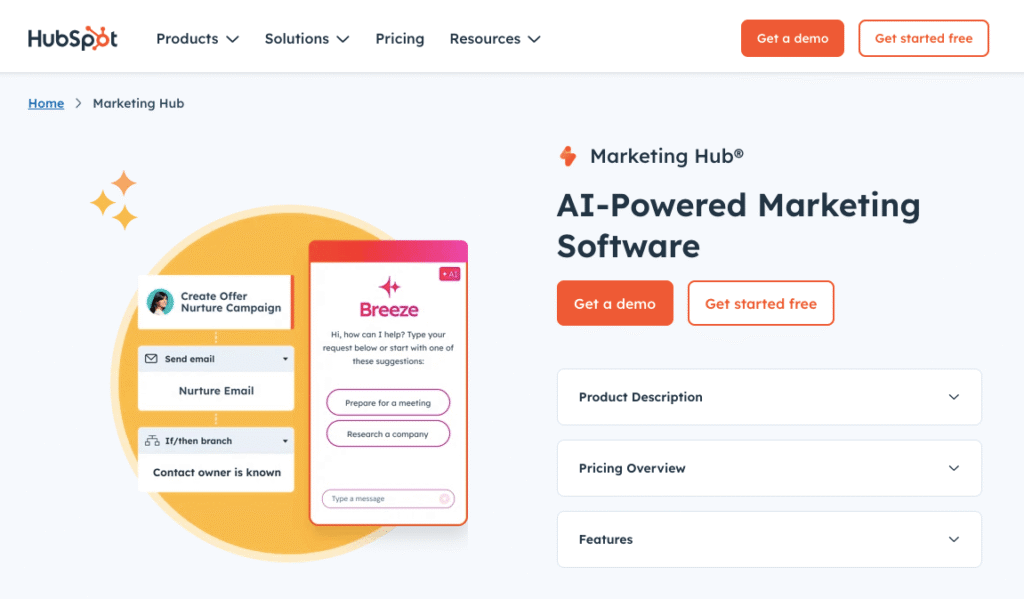
For a long time, HubSpot has been one of the best all-in-one marketing automation tools. It combines email marketing, CRM, workflows, content management, and reporting into one place. The best thing about HubSpot is that everything works together so well. You don’t have to worry about managing different tools or data silos because everything is connected.
In my opinion, HubSpot is the best for inbound marketing. HubSpot is perfect for you if your plan is to get leads with content, nurture them with personalized workflows, and then turn them into customers. It’s especially useful for businesses that are growing and need a system that can grow with them without having to switch tools all the time.
2. Brevo (formerly Sendinblue)
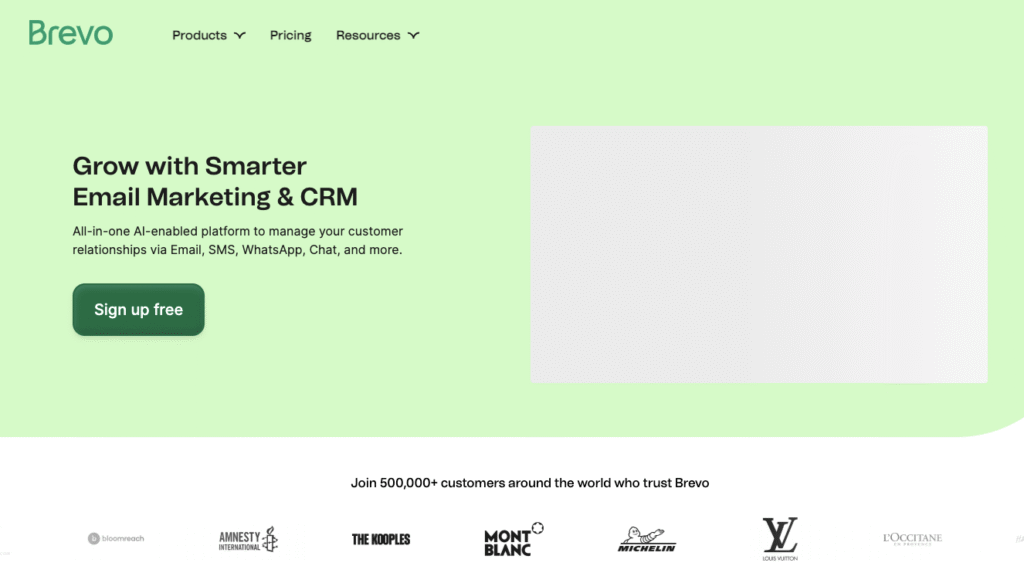
Brevo has found its niche by providing simple but powerful automation at a low price. You can easily make campaigns across email, SMS, WhatsApp, and even chatbots with its visual workflow builder. You don’t have to be a tech expert to set up automation flows; they’re easy to use and understand.
Brevo’s prices are what set it apart. It’s a good choice for people on a budget because it has a free plan and modular upgrades that let you grow. This makes it one of the most useful tools out there right now for new businesses and small teams.
3. Omnisend
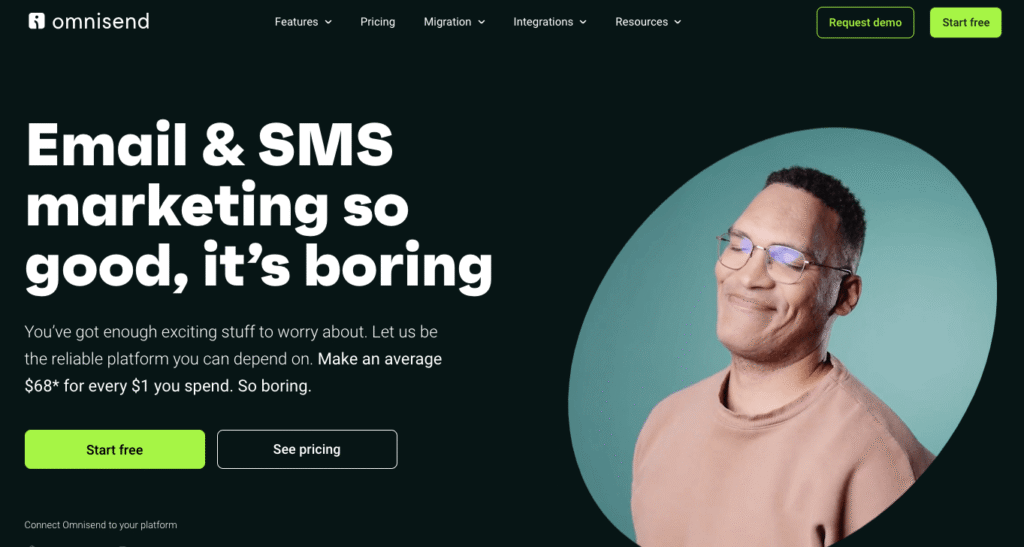
Omnisend was made just for online stores. It has features like cart abandonment recovery, product recommendations, and customer segmentation, as well as automated email and SMS. If you have an online store, Omnisend can help you get back money you’ve lost and boost the lifetime value of your customers without you having to do anything all the time.
Because it fits so well with their sales cycles, I’ve seen e-commerce teams rely on Omnisend a lot. It’s one of those tools that will help you make more money right away.
4. Mailchimp
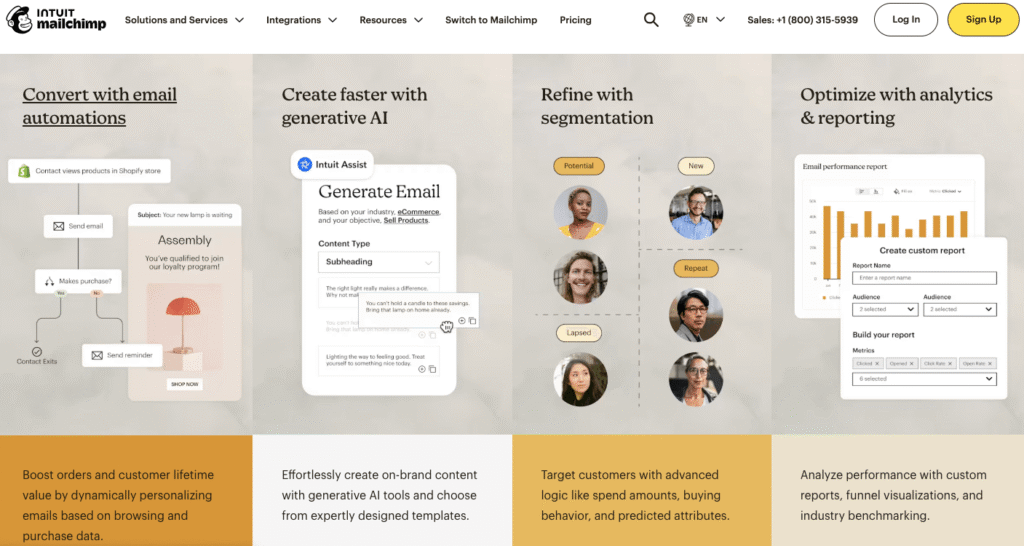
For years, Mailchimp has been a well-known name in digital marketing, and it will still be strong in 2025. Its ease of use, many integrations, and strong analytics are what make it powerful. It may not be as specialized as some other platforms, but its flexibility makes it a good choice for businesses that need to do a lot of different kinds of marketing.
Mailchimp is often a good choice if you want a tool that is both simple and powerful. It’s especially helpful for businesses that need to connect different apps and want a platform that can do it all.
5. ActiveCampaign

ActiveCampaign is a great choice because it is both affordable and useful. Its mix of automation and CRM features makes it especially good for small businesses. You can create email sequences, keep track of leads, and handle customer data without having to pay for a more expensive business solution.
I think it’s one of the best tools for small and medium-sized businesses that want strong automation without having to deal with a huge system.
6. Salesforce Pardot (Account Engagement)
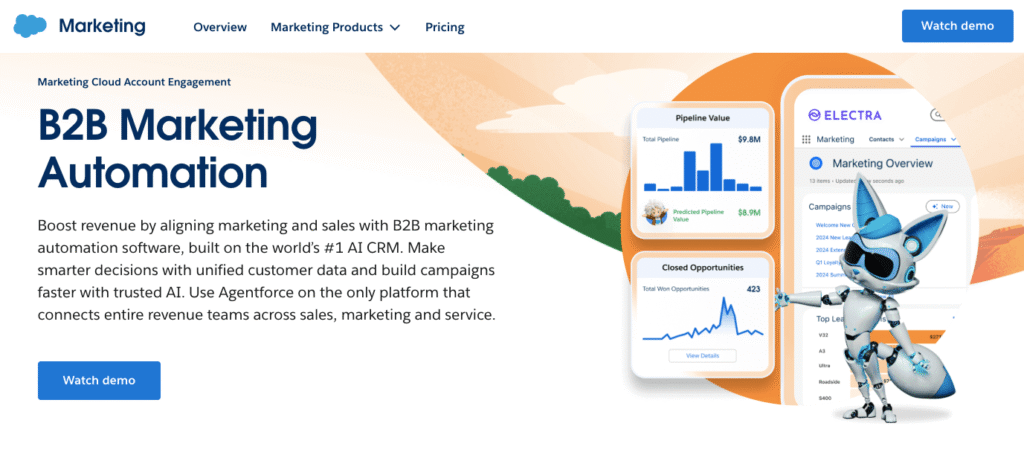
Account Engagement, formerly known as Salesforce Pardot, is a tool for B2B marketing at the enterprise level. It’s not enough to just send emails; you also need to make sure that marketing and sales are on the same page. The platform is great at nurturing leads, scoring them, and sending out very personalized campaigns for sales cycles that last longer and are more complicated.
Pardot is the kind of heavy-duty tool that pays off if you run a B2B business with a big sales team. It’s too much for small businesses, but for big businesses, it gives them an unmatched level of detail.
7. Klaviyo
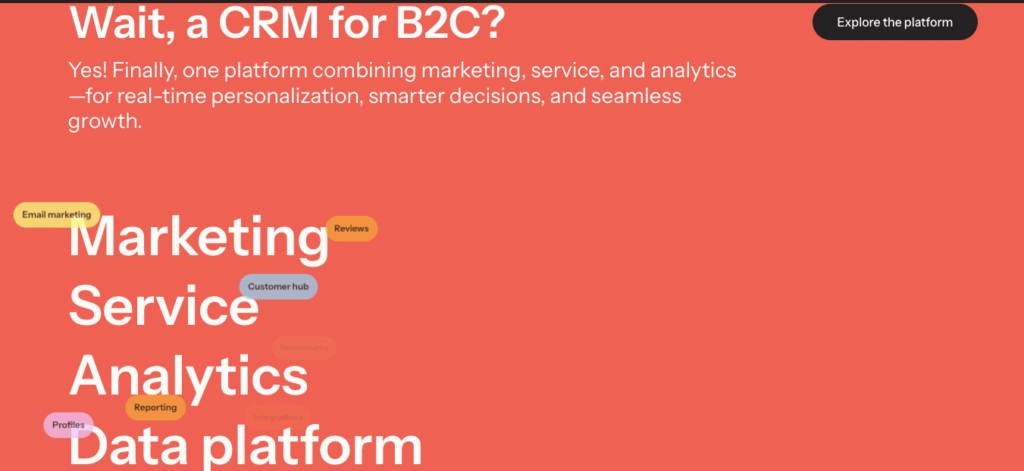
Klaviyo is a popular choice among online stores because it can send very personalized messages. It keeps track of what customers do and uses that information to send them messages that are very relevant at the right time.
Klaviyo is often a way for online stores to make money. Because Klaviyo increases engagement and repeat sales so much, I’ve seen brands double down on it. This is the tool to think about if your strategy is based on customer data.
8. Constant Contact
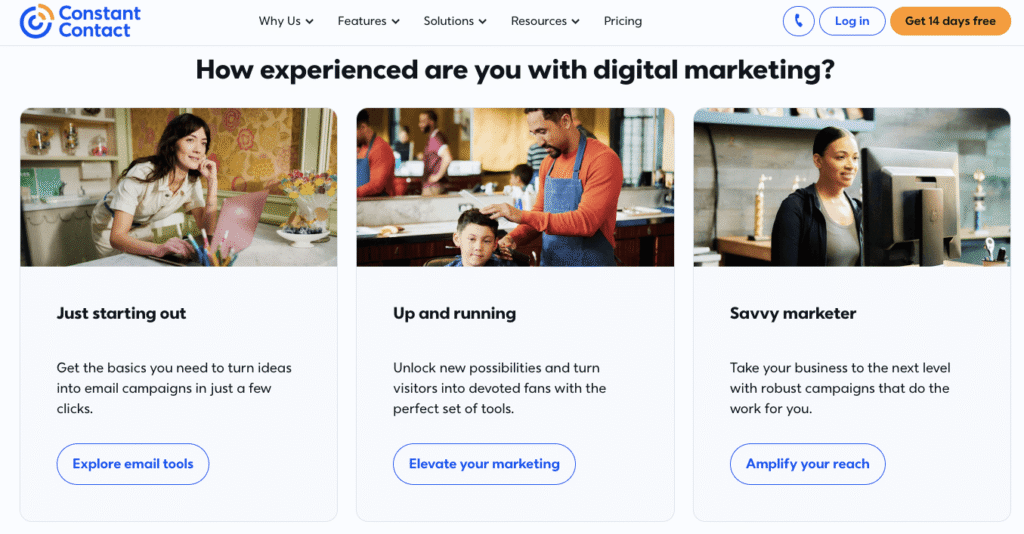
Constant Contact is made for businesses that want something simple and useful. It’s a simple platform that works well for campaigns across multiple channels. A lot of small and medium-sized businesses use it to handle newsletters, sales, and simple tasks without having to know a lot about technology.
Its value comes from how easy it is to use. You can start campaigns quickly, and they scale to match your pace..
9. Zapier
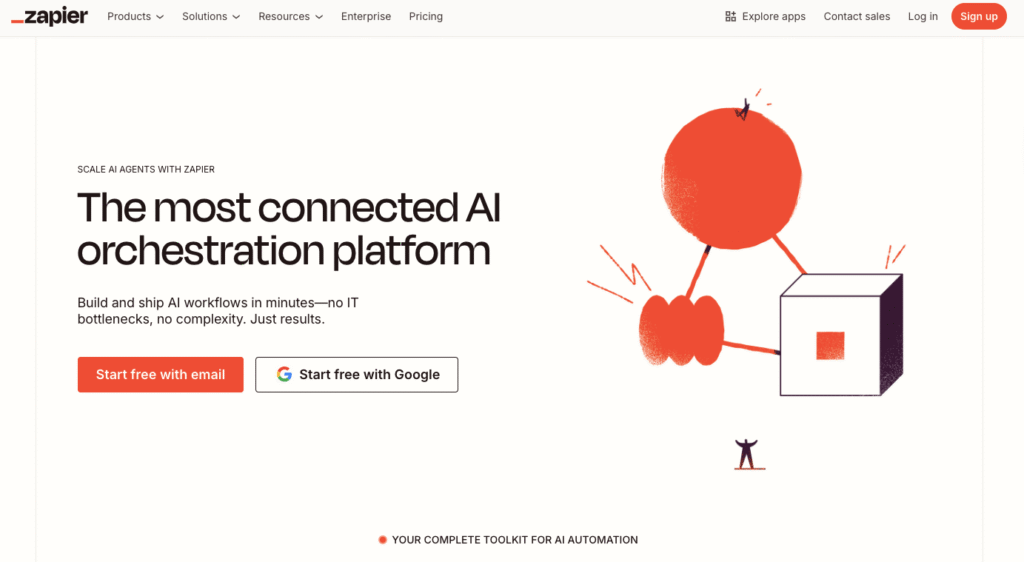
Zapier isn’t a typical marketing automation tool, but it’s one of the best ways to link your apps and workflows. Zapier lets you automate tasks that need to be done on more than one platform, like sending leads from a form to your CRM, starting email campaigns, or automatically updating spreadsheets.
Zapier has saved me a lot of time by connecting tools that don’t work together on their own. Zapier is a must-have for marketers who want to be able to change their stack and have control over it.
Tools with Niche Focus
Not every marketer needs a platform with all the features. A specialized tool that fixes a certain problem is sometimes the best answer. Here are a few that stand out for me:
- Supademo: A great tool for making product demos that people can interact with.
- Clay: Helps you add more information to your data and make your contact lists smarter.
- Customer.io: Messaging based on behavior was their main goal.
- Buffer: A dependable way to plan and keep track of social media posts.
- Relay.app: Uses AI to automate workflows.
- n8n: A technical tool for automating things that teams need to be able to change.
- Warmly: Helps you find and keep track of people who visit your website.
- Lemlist: It is an expert at reaching out to people through multiple channels.
- Zoho Campaigns: It is a marketing hub for small businesses that want to grow without spending a lot of money.
These tools might not be able to do everything that a full automation suite can do, but they can help you with specific parts of your plan. Sometimes, they make the difference between a good and a great workflow.
How to Choose the Right Automation Tool?
The “best” automation tool isn’t the same for everyone; it depends on your goals, resources, and audience. I have seen companies waste money on advanced platforms that they hardly use, while smaller, simpler tools worked much better.
Begin with what’s most important to you. If you have an online store, check out tools like Omnisend or Klaviyo that help you make more sales through email and text messages. For B2B, you can get the CRM depth you need from platforms like HubSpot or Salesforce Pardot. Brevo or ActiveCampaign are great places to start if you want something that won’t break the bank and can grow with you.
Don’t forget about integration, either. A tool that works well with your CRM, website, and analytics will save you a lot of time doing things by hand. And last but not least, use free trials. Try out the tool with your own workflows to see if it works for you.
Conclusion
Automation used to be a way to get ahead of the competition in marketing, but now it’s a must-have. The right tool can help you save time, get better at targeting, and make more money in the end. The wrong one will just cost you money.
In my experience, the most important thing is to choose the right tool for your type of business and stage of growth. If you need to, start small, but remember that you can always grow. The tools are smarter and easier to get than ever in 2025. It’s up to you to use them wisely.
Frequently Asked Questions





